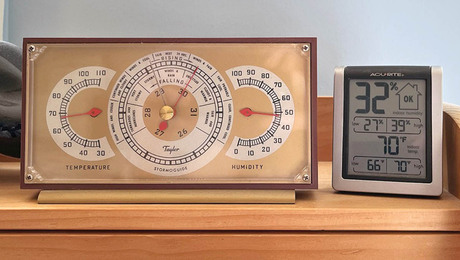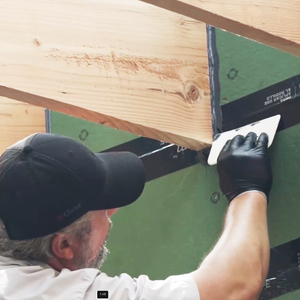Backprime old clapboard – Kilz or Oil ?
I’ve ripped out a couple of interior walls down to the studs. The clapboard is nailed directly to the studs. No sheathing. House was built in 1840.
I was going to use Kilz, based on responses I’d gotten here to sealing odors from mice that had been in the wall. Today I am looking at the backside of the siding and it shows stong signs of past moisture. Now I don’t see how it could ever have gotten really that wet, so I am thinking it is from constant absorbption of humidity? The wood is a bit soft with age too. Shellac, aka Kilz, has a bad reputation in damp situations.
Thanks
Edited 8/29/2004 10:18 pm ET by Cleveland_Ed


















Replies
I have not run into this problem around here (in 1840 the only things being built around here were cedar longhouses) but I think principals are the same.
If there is no obvious way the water could get in from the outside area, then it migrated from the inside. I would think that in Ohio, your vapour barrier would be against the inside. I think you need to look at the siding and decide if you need to replace the punk areas. Once that determination has been made, my first choice, since I use it, is a good oil based undercoat, and for ease of use, sprayed on. Zinnser makes H2Oil primer which is a pain to clean but good for these kind of applications. That's if your local experts think that, in fact, it's a good idea to paint the inside of the walls. There is a product called "Deodoroc" which is fantastic against smells. You may have to Google it to find a web site.
Then it's insulation: sprayed or bats, depending on which side of the fight you are on. Vapour barrier and don't let the drywallers cut it - watch them!
Good luck!
Quality repairs for your home.
Aaron the Handyman
Vancouver, Canada
I've decided, with a lot of help from your responses, that the moisture was from inside the room. That side of the house gets no wind driven rain. It has been a kitchen for a long time, and the moisture was probably condensing on the backside of the siding. I'll now get a proper vapor barrier in place insteadof just the kraft paper on the batts. Somehow I'll try to leave an airspace just in case I'm wrong about the moisture source. The punk wood is not so soft as to need replacement. I already used some kind of enzyme treatment to cut into the source of the odor.
I see I was mistaken in thinking that Kilz and Zinnser were shellac products. I'll try to buy one of them rather than just use the Benjamin Moore ext oil primer I have here. I might even put a 2nd coat on the primer, a top coat to really seal it. Thanks for your responses.
Kilz is an oil-based primer. Kilz 2 is a latex. White pigmented shellac is sold by Zinsser under the name BIN.
Look at bulk water ingress, drainage, and then vapor issues. A properly built house is not going to rot the siding from within, or by absorbing water from the air.
Bill
Here in western New York state I've owned a couple 19th-century houses (1820 and 1838) that have had plenty of water stains on the backside of the original clapboards. I'm quite sure the water penetrated from the exterior ... during 160 years of wind-driven rain, small cracks and gaps in the siding, periods of less-than-perfect paint covering ... I think that's to be expected.
The open wall cavity ... and those same small gaps and cracks .. allows periodic wetness to dry. Unless you can guarantee zero water penetration, don't pack insulation up against the backside of the clapboards, even if you back-prime them. Better, I think, to use rigid foam insulation on the interior of the studs. Or figure a way of maintaining some airspace behind the clapboards.
You mention that the wood seems "soft." Soft and moist? Soft and decayed? There could be a greater moisture problem than I've experienced. It could be the water in moist interior air condensing on cold exterior clapboards. You'll be installing a proper moisture barrier on the interior side of the studs, right? That should help solve that problem if it exists.